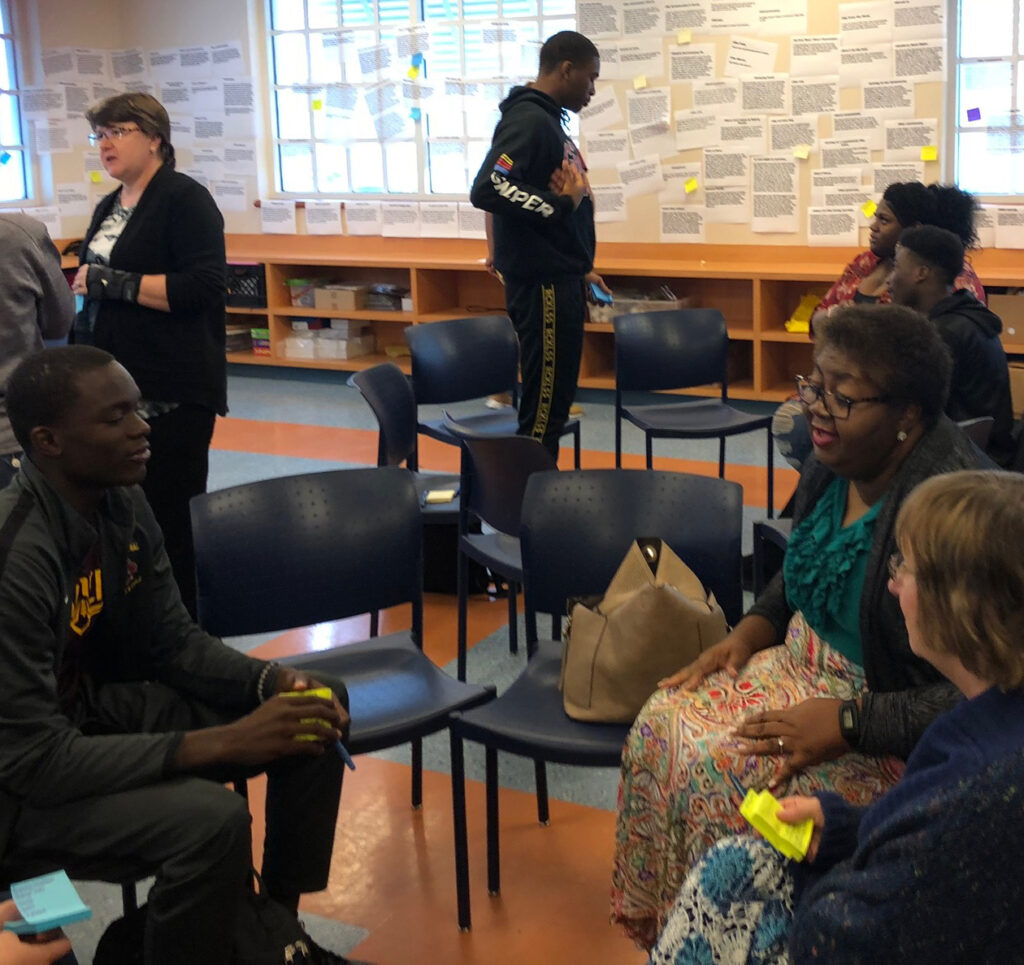
After viewing stories collected as part of the We Are Here project at the Insights to Action workshop in March of 2019, community members discussed issues, themes, and ideas they noticed during their scan. Participants formed four groups and engaged in 15 minutes of conversation before beginning a discussion as a single, large group. Youth and adults shared contrasting opinions (for example, on the meaning of concepts used to label the issues and on how things should change), which led to an interactive and lively dialogue. By giving youth opportunities to speak, the facilitator helped to guide the evolving discussion, allowing contrasting perspectives to spur community insights.
One issue youth identified among the stories, which resonated with their own experience, was the idea of retaliation, or the mindset that if someone does something to you, you need to do something worse back to them in order to maintain respect. Some observed that “neighbors used to look out for one another and the community and don’t do that as much these days.” Similarly, participants in the data reviews found that within the stories of violence, there was a theme of silence in the face of negative circumstances. One participant commented, “Maybe the silence is a coping mechanism for survival, to help them deal with adversity?”
Through further discussion, the group, led mostly by youth from each community, listed additional issues and ideas evoked by the stories. These represented elements of the overall, collective narrative. Youth spoke in dualistic terms, identifying the kind of stories they hoped to see less of in the future and the stories they wanted to see proliferate. The following table lists these as corresponding pairs in two columns. This captured the direction in which the community hoped to shift, to go from behaviors in the first column to behaviors in the second. Participants voted on which themes or issues were most important to them. Several issues were combined to form four themes, which are shown at the top of the table.
In a follow-up sensemaking session held in the Glades in July of 2019, both adults and youth (in Student ACES) discussed stories after a gallery walk. They recognized challenges faced by the community, including lack of resources, violence, struggle, and police brutality. The disparity between growing up now and growing up in the past was another theme. Some stories, they noted, illustrate support from family or the community while others do not. Another insight was the degree to which quality of life is influenced by family dynamics, a factor evident in stories about family obligations as well as those about absent fathers or children growing up “too fast.”
Themes identified in the Insights to Action workshop (with top four themes indicated in the first column):

Learn more in the report, We Are Here: From Personal Narratives to Collective Insight:
